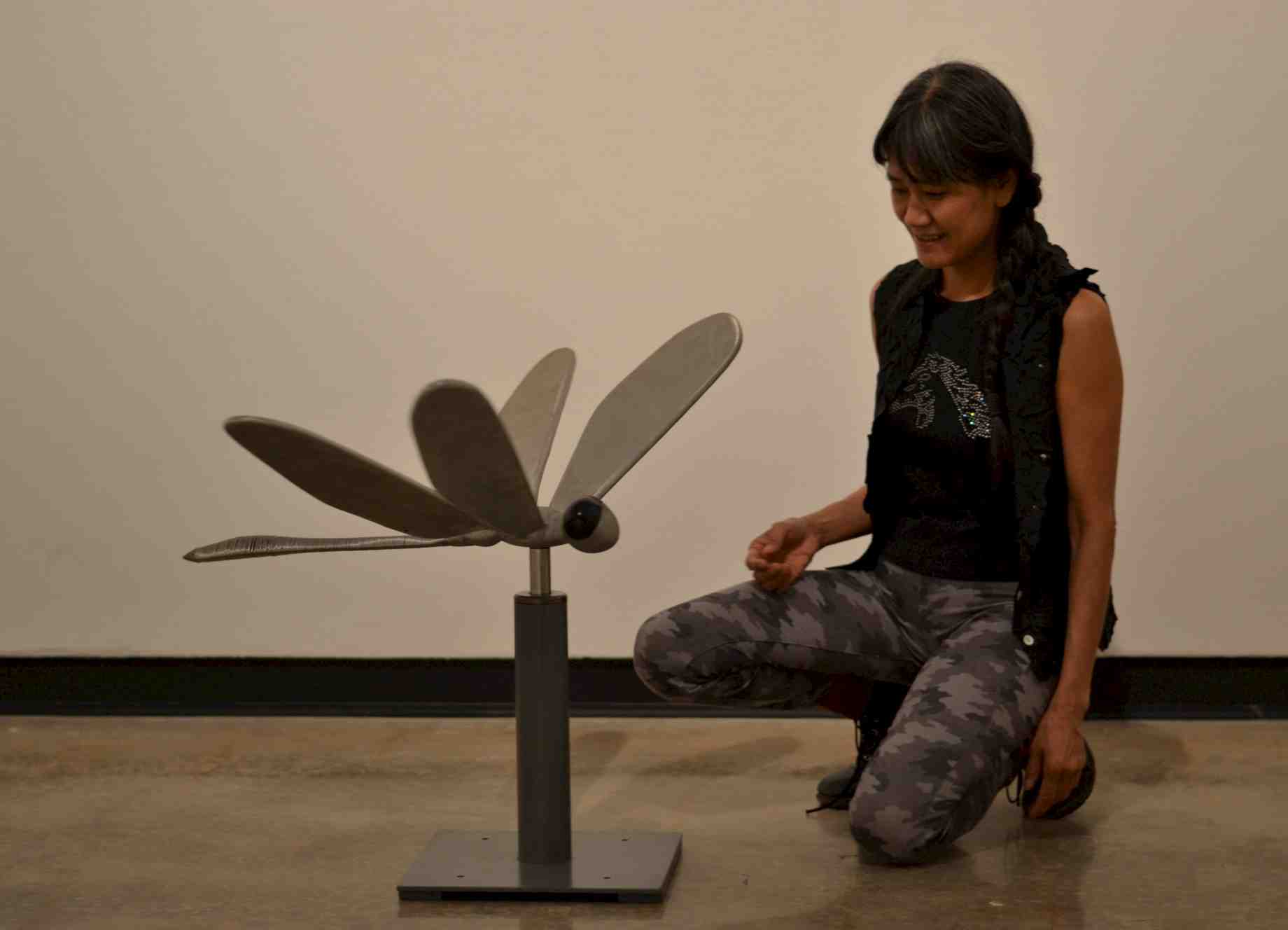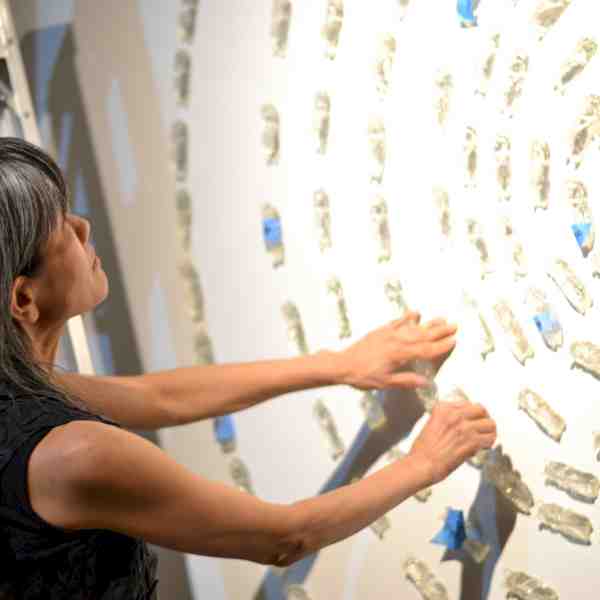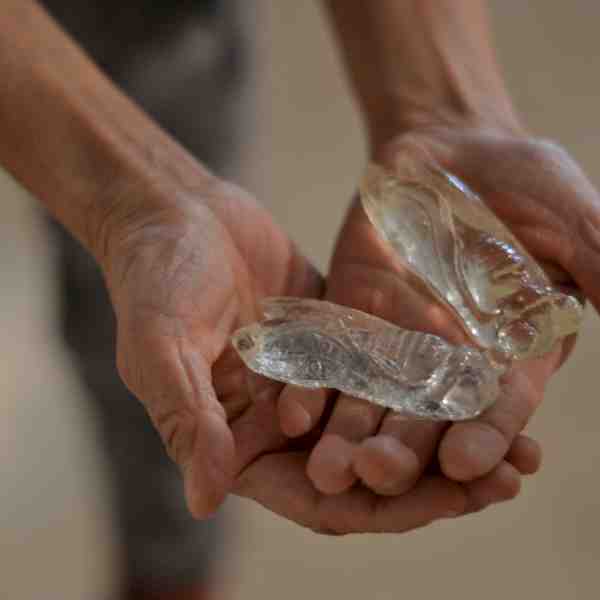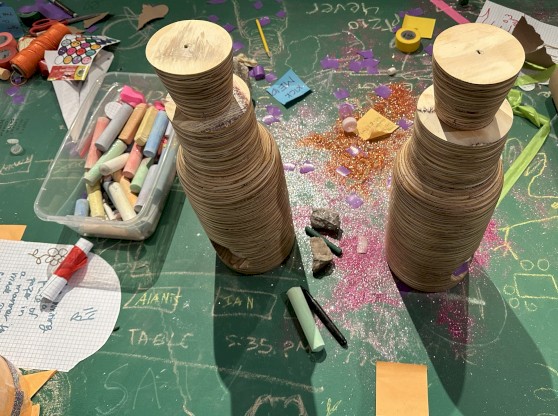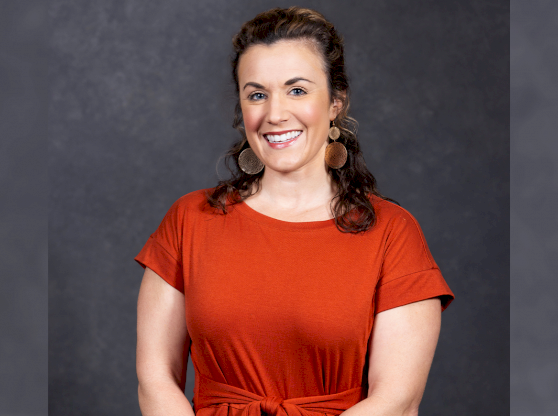This year’s Creative B public artist brings giant-sized dragonflies, brightly lit reeds, and 365 singing cicadas to the University Gallery this summer.
Nobuho “Nobi” Nagasawa is an interdisciplinary Japanese artist whose featured artwork explores the interactions of nature and art. Her Creative B public art projects, “Water Landings” and “Sun Catcher,” will be installed the week of July 4 outside the University Gallery.
“Water Landings” includes large-scale dragonfly sculptures that will be positioned outside the gallery and will be visible from 13th Street.
The dragonflies are wind-activated sculptures, Nagasawa said. With a little breeze, some of the dragonflies’ wings can move quietly up and down.
She said one of the oversized insects is a wind vain. Other installations of this artwork allow the dragonfly to spin in a circle with a little force of air. However, because of the hurricane season in Florida, this installation will not spin as a safety precaution.
On top of the gallery, the “Sun Catcher” reeds will sway in the breeze and light the courtyard.
The reeds are made of slender, flexible fiberglass and stand about 4 to 6 feet tall, according to a presentation by Nagasawa. Each reed is topped with its own internally LED lighted seedpod.
The reeds were first installed at the Oregon Institute of Technology to resemble a species of light-emitting fireflies that are on the decline in the area due to urbanization, pollution and lower water tables.
“After dark, the swaying motion of the reeds will resemble a cluster of fireflies, and will draw attention to the fragile ecology of this region,” Nagasawa wrote in her presentation.
An opening reception will be held at the Florida Museum of Natural History on July 8 at 6 p.m. during the Creative B movie series film “Mothra.” The reception will include a meet and greet with Nagasawa and showcase a slideshow of her work featured at the university.
In addition to the work displayed outside of the gallery, Nagasawa also has art displayed inside.
One of the artworks features 365 small cicada sculptures displayed in spiraling circles.
Cicadas are small insects that spend most of their lives underground, only emerging every 17 years, according to Nagasawa.
Her white transparent cicadas come in two sizes – male and female – and are fixed to the wall where a video of Nagasawa will be projected. The projection will be of Nagasawa’s throat as she breathes.
The cicadas represent the afterlife, and Nagasawa said viewing them represents the communication between this life and the afterlife.
The artwork is housed in an alcove that is accessible by a short pathway that is only wide enough for a single person to fit through.
“We’re born alone and die alone,” Nagasawa said.
The pathway will stop about a foot away from the cicadas. Nagasawa said there is a gap because the viewers are still alive and therefore cannot reach the afterlife.
The exhibit also features the singing sounds of the cicadas and Nagasawa’s voice. She uses a secretly located sensor that will be able to determine where the viewer is standing. The volume of the singing will get louder as the viewer approaches the cicadas.
She categorizes this artwork as a synesthesia experience that involves all of a person’s senses.
“I want people to basically be aware when they are living,” Nagasawa said. “You don’t just hear with your ears. You hear with your eyes. You smell with your ears. You feel people with your eyes. And you smell with your mouth.”
Nagasawa is also partnering with the College of Engineering for Creative B with School of Art and Art History alumnus Charlie Cummings. She will also have another art show in the University Gallery later this fall.
